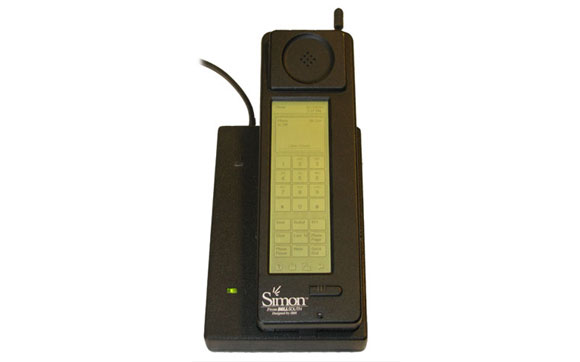It’s quite difficult to believe that just decades ago, the mere concept of a touch-enabled device could only be found in sci-fi flicks and novels. Nowadays, it’s practically impossible not to have a touchscreen gadget within an arm’s length. In fact, touchscreens are everywhere — from the thermostats in your homes, to center consoles of your cars, to the phones in your pockets.
In celebration of our 30th birthday here at Atmel, we’ve decided to not only reminisce our earliest days but to take a trip down memory lane to explore touch technology’s evolution from fiction to fact…
1948
The Electronic Sackbut is designed by Hugh Le Caine at his home studio in Ottawa, Ontario.
1965
E.A. Johnson invents the finger-driven, capacitive touchscreen at the Royal Radar Establishment in Malvern, United Kingdom.
1970
Dr. G. Samuel Hurst designs the first resistive touchscreen — almost by accident.
1971
PLATO IV not only became one of the first generalized computer-assisted instruction systems, but the first to be used in a classroom setting. Students could answer questions with the tap of a finger using the device’s infrared touch panel.
1977
One of the early implementations of mutual capacitance touchscreen technology is developed at CERN.
1982
University of Toronto’s Nimish Mehta develops the first human-controlled multi-touch device, dubbed the “Flexible Machine Interface.”
1983
HP Series 100 HP-150 becomes one of the earliest touchscreen computers.
Myron Krueger introduces Video Place, a vision-based system capable of tracking hands, fingers and people using a set of gestures.
1984
Bob Boie of Bell Labs officially develops the first multi-touch overlay.
Casio rolls out its AT-550 watch with a touchscreen.
1986
The Buick Riviera features a touchscreen in its Graphic Control Center.
1993
IBM and BellSouth debut the first-ever touchscreen phone, the Simon Personal Communicator.
1998
Palm Inc. releases the Pilot, the first generation of its PDA devices.
1999
Wayne Westerman and John Elias create FingerWorks, a company that specializes in multi-gesture input devices.
2001
Alias|Wavefront launch the Portfolio Wall for large design and 3D animation teams.
2002
Sony introduces mutual capacitive touch recognition with SmartSkin.
2004
Andrew D. Wilson develops a gesture-based, 3D-capable imaging touchscreen called TouchLight.
2005
JazzMutant releases the Lemur, a music controller with a multi-touch screen.
2006
Jeff Han unveils an interface-free, touch-driven computer screen at TED.
2007
Apple successfully releases its touchscreen-equipped iPhone.
2008
Microsoft introduces the Surface table.
2009
Nortd Labs launches TouchKit, a DIY modular development solution to make multi-touch readily available in an open source manner.
2010
Apple introduces the iPad.
2011
Microsoft and Samsung partner to introduce the SUR40 touch-capable surface with PixelSense.
2012
Atmel XSense is introduced to the world, enabling future curved surfaces and flexible displays.
2013
The Atmel team exhibits AvantCar, a fully-functional center console equipped with two large curved touchscreen displays – without mechanical buttons.
The burgeoning Maker Movement paves the way for Bare Conductive to launch its [ATmega32U4 powered] Touch Board, now enabling everyone to easily transform any material or surface into a touch sensor.
2014
Whirlpool imagines a kitchen of the future with a touchscreen stovetop capable of displaying recipes, social feeds, weather and more.
A team from Carnegie Mellon University’s Future Interfaces Group creates Skin Buttons, touch-sensitive projected icons made on a user’s skin.
The Centre for Process Innovation devises an idea to remove passenger plane windows and replace them with OLED touchscreens.
What will be next? As we gaze into the future, unlimited-touch capability will open up a range of endless possibilities for interface designers. From our touchscreen controllers to touch sensors and everything in between, Atmel has and will continue to provide the next-gen technologies enabling innovative and differentiated designs.






























